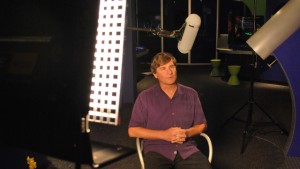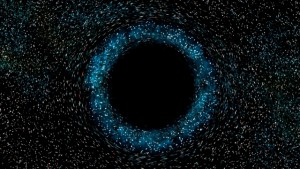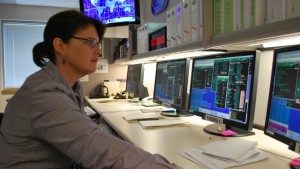Ever since Princeton physicist John Wheeler coined the term nearly 50 years ago, black holes have evoked a sense of mystery and wonder for astronomers and space enthusiasts. But unlike comets, stars and other beautiful objects in the night sky, black holes can't actually be seen - they trap light, after all. From this infinitely dark void, myths and misconceptions have taken flight, spurred by the sci-fi depictions of black holes as cold cosmic villains with a bottomless appetite for nearby planets, stars and mighty spacecrafts whizzing through the galaxy at warp speed.

"Watching sci-fi movies is fun in part because as a scientist, I like to try to find out what’s wrong with it. On the other hand, you know, some of what we used to think was sci-fi became reality," said Alex Filippenko, a UC Berkeley professor of astronomy who has been studying and hunting black holes for 30 years. He also teaches one of the most popular classes at UC Berkeley, an introduction to astronomy course which attracts thousands of students a year, many of whom are non-science majors.
Professor Filippenko helped debunk for me some of the fanciful myths about black holes, including the ability to travel through time by surfing a 'wormhole', a theoretical portal which connects two black holes and leads to another universe. He told me, "People sometimes think that by jumping into a black hole you can travel backward in time. But that’s not really possible because after you jump into the black hole, you’ll get crushed or vaporized."

Even though black holes don't behave like the celestial monsters with insatiable appetites they're sometimes caricatured to be, there is still plenty of wonder and unanswered questions about them to satisfy astronomers for years to come. For example, scientists have distinguished between two major classes of black holes - stellar black holes (also known as stellar-mass black holes) and supermassive black holes. The former are roughly six to 30 times the mass of the sun and the latter are a whopping million to billions of times the mass of the sun. So are there intermediate-mass black holes, on the order of hundreds to thousands of times the mass of the sun?
Quite possibly, yes. In August, a team from Keio University in Japan announced their discovery of a region of space 30,000 light years away which they suspect might contain young, intermediate-mass black holes. One of these black hole candidates is nearby Sagittarius A*, a supermassive black hole which lurks at the center of our Milky Way galaxy.

